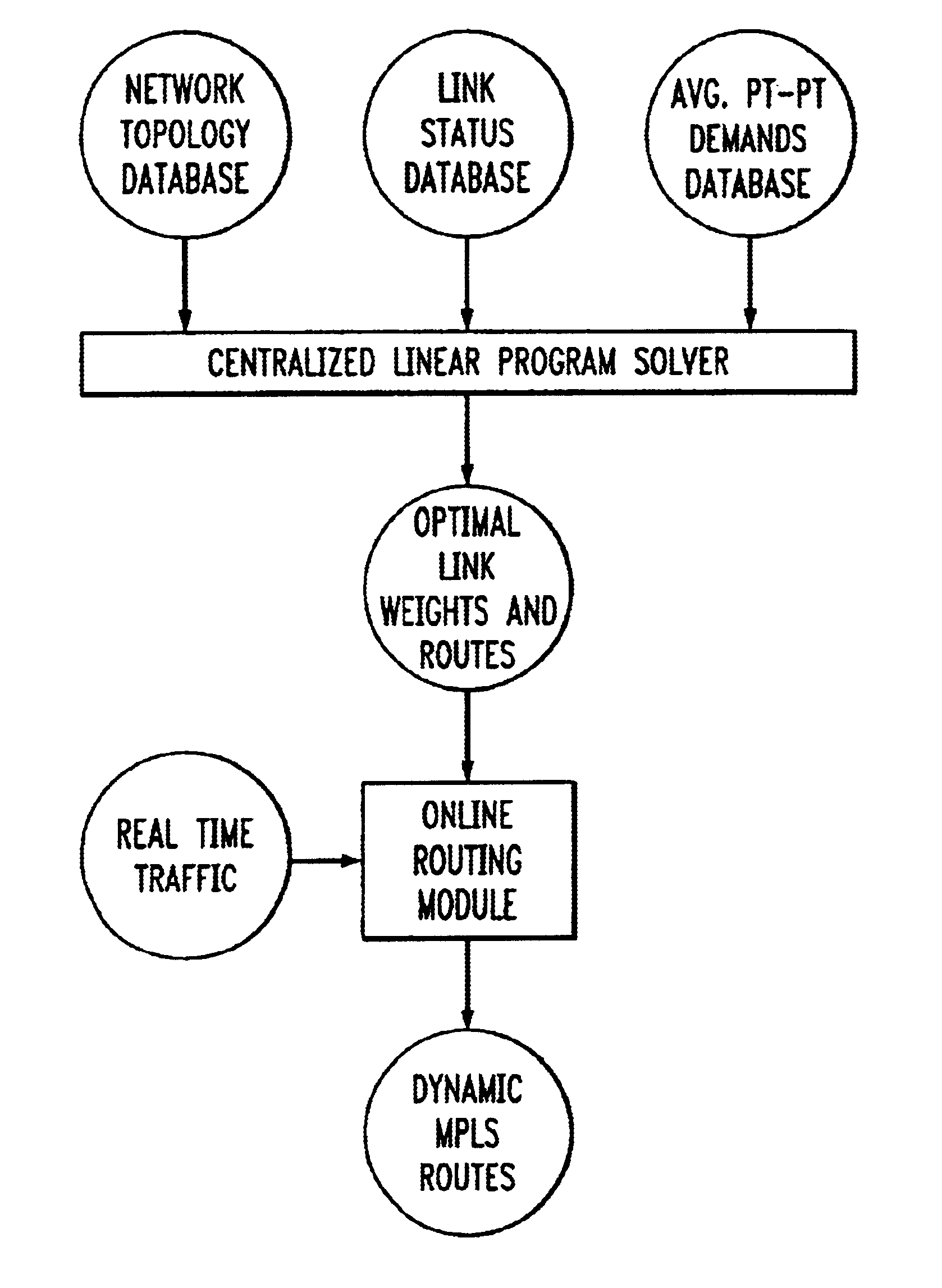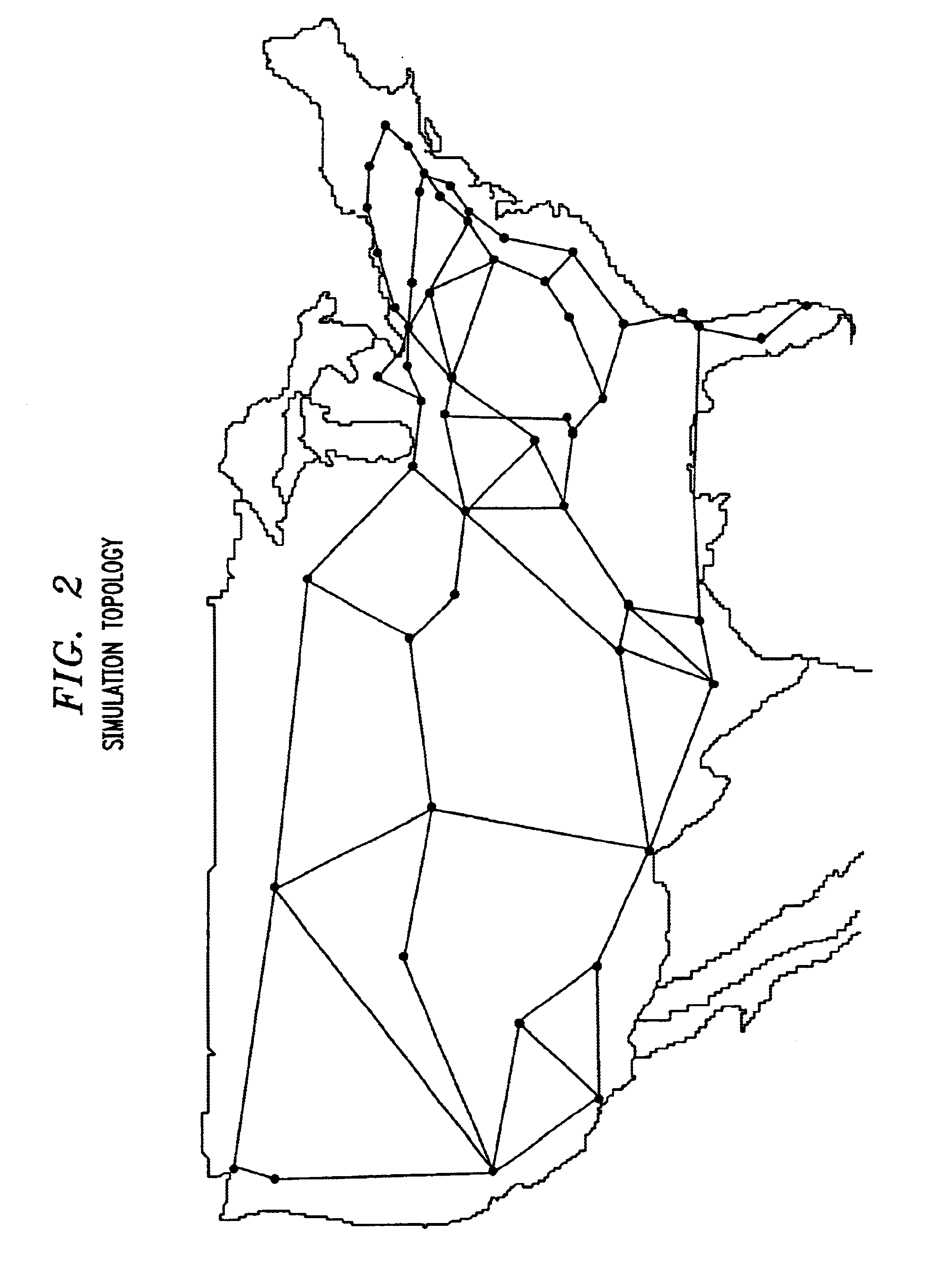Managing congestion and potential traffic growth in an information network
a traffic flow and information network technology, applied in data switching networks, frequency-division multiplexes, instruments, etc., can solve problems such as uneven traffic distribution, high management complexity and messaging overhead, and inefficient use of resources within internet backbone networks
- Summary
- Abstract
- Description
- Claims
- Application Information
AI Technical Summary
Problems solved by technology
Method used
Image
Examples
Embodiment Construction
To evaluate the performance of the present procedures in a realistic setting, a network topology similar to one of the largest Internet backbones in the United States was used. The network has 54 nodes and 174 directional links, as represented in FIG. 2.
For the given network topology, the link capacities are generated as random numbers with a uniform integer distribution in [600, 1400]. Ten test sets were constructed, with the number of demands varying from 300 to 1200 in increments of 100. The size of each individual demand is generated by a random variable with a uniform integer distribution in [1, 10]. The source and the destination pairs are also selected randomly among all edge nodes, although all duplicate pairs are removed.
All quantities are specified in a common bandwidth unit (such as DS1). The exact value of the bandwidth unit and the overall size of the total link capacities vs. total bandwidth demand do not affect the results; i.e., the problem formulation uses link util...
PUM
 Login to View More
Login to View More Abstract
Description
Claims
Application Information
 Login to View More
Login to View More - R&D
- Intellectual Property
- Life Sciences
- Materials
- Tech Scout
- Unparalleled Data Quality
- Higher Quality Content
- 60% Fewer Hallucinations
Browse by: Latest US Patents, China's latest patents, Technical Efficacy Thesaurus, Application Domain, Technology Topic, Popular Technical Reports.
© 2025 PatSnap. All rights reserved.Legal|Privacy policy|Modern Slavery Act Transparency Statement|Sitemap|About US| Contact US: help@patsnap.com



